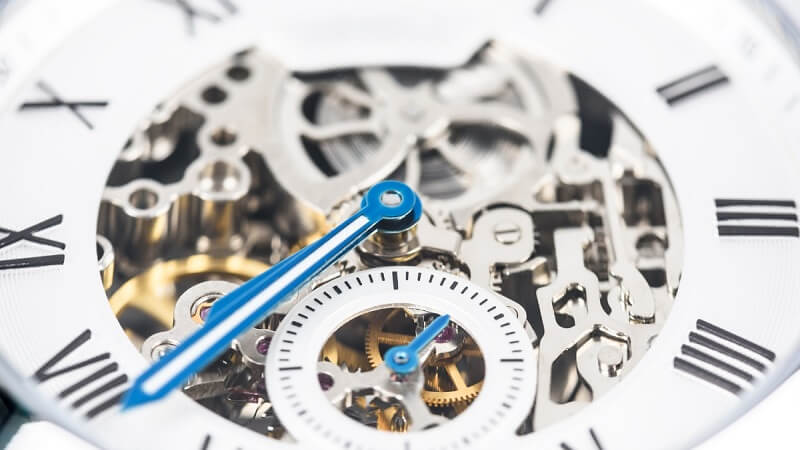For centuries, watch enthusiasts have admired the elegance and precision of mechanical watches. In the world of horology, two types stand out: the hand-wound mechanical watch and its sophisticated counterpart, the automatic watch. Both are valued for their heritage and mechanical sophistication, yet they each offer their unique appeal with differences ranging from minor to major.
The Precision in Mechanics
At the core of this comparison is the key question: what makes these watches tick? Mechanical watches, marvels of engineering, are powered by a wound mainspring. This energy is released gradually to drive the watch’s movement.
Automatic watches, or “self-winding watches,” harness the wearer’s arm movements for kinetic energy. This energy spins a rotor, automatically winding the mainspring with movement. This process powers the watch’s gear train, escapement, and wheels, seamlessly displaying time.
The Comfort of Innovation
In terms of convenience, automatic watches are superior, offering the modern luxury of self-sufficiency. Unlike mechanical watches that need regular, sometimes daily, hand-winding, automatic watches simply require wearing to keep them running. This effortless motion suits the lifestyle of the contemporary user.
However, ease of use isn’t everything. Many enthusiasts enjoy the daily routine of winding their watches, seeing it as a direct link to the ancient craft of watchmaking. Manually winding a watch offers a moment of reflection, an opportunity to appreciate the heritage and craftsmanship of the timepiece.
The Rhythm of Accuracy
When it comes to precision, both mechanical and automatic movements are known for their remarkable accuracy. However, automatic watches might be slightly less consistent due to their self-winding nature compared to manual ones.
Mechanical watches require consistent winding and are affected by how they’re worn. Automatic watches introduce variability with their moving rotor but remain reliable for daily use. Modern improvements in both types have reduced the difference in accuracy, ensuring you’re always on time in style.
Pricing and Prestige
In the diverse World of Watches, mechanical pieces range from ‘affordable’ to ‘luxury,’ attracting a broad audience with their varied prices. From simple models to ones adorned in precious metals and complex features, mechanical watches suit almost any budget, appealing to watch enthusiasts across the board.
Discover the luxury of automatic watches without the hefty price tag when you buy Rolex watches at A&E Watches, where opulence meets value. Prestigious yet accessible, these self-winding timepieces present a perfect fusion of sophistication and mechanical prowess for savvy investors.
The Aesthetic Equation
Beyond its function, a watch is a statement of personal style. The simple elegance of a hand-wound mechanical watch appeals to those who appreciate a traditional, minimalist look. On the other hand, the slightly larger and busier design of an automatic watch may appeal to those seeking a bit more complexity.
Some collectors enjoy seeing the internal movement through the back of an automatic watch, where the rotor’s oscillations and the gears’ dance are visible—an engaging aspect in an otherwise stationary object. Regardless of its mechanics, a watch should reflect the owner’s taste and lifestyle.
Conclusion
Choosing between a mechanical or automatic watch means embracing a legacy of craftsmanship and innovation, where each timepiece is a testament to human achievement and a blend of tradition and technology. Exploring these options not only deepens appreciation for their craftsmanship but also aligns personal values with a timepiece that truly resonates.
